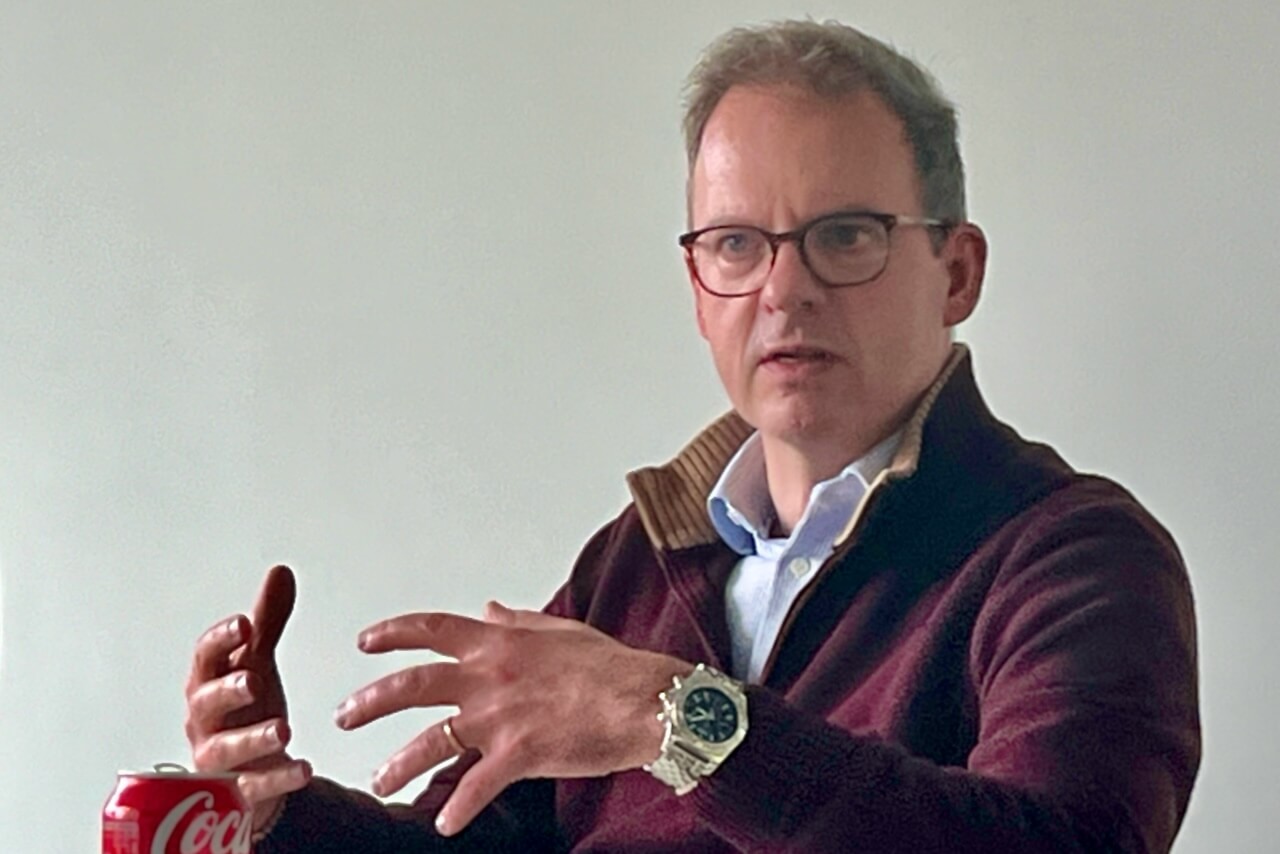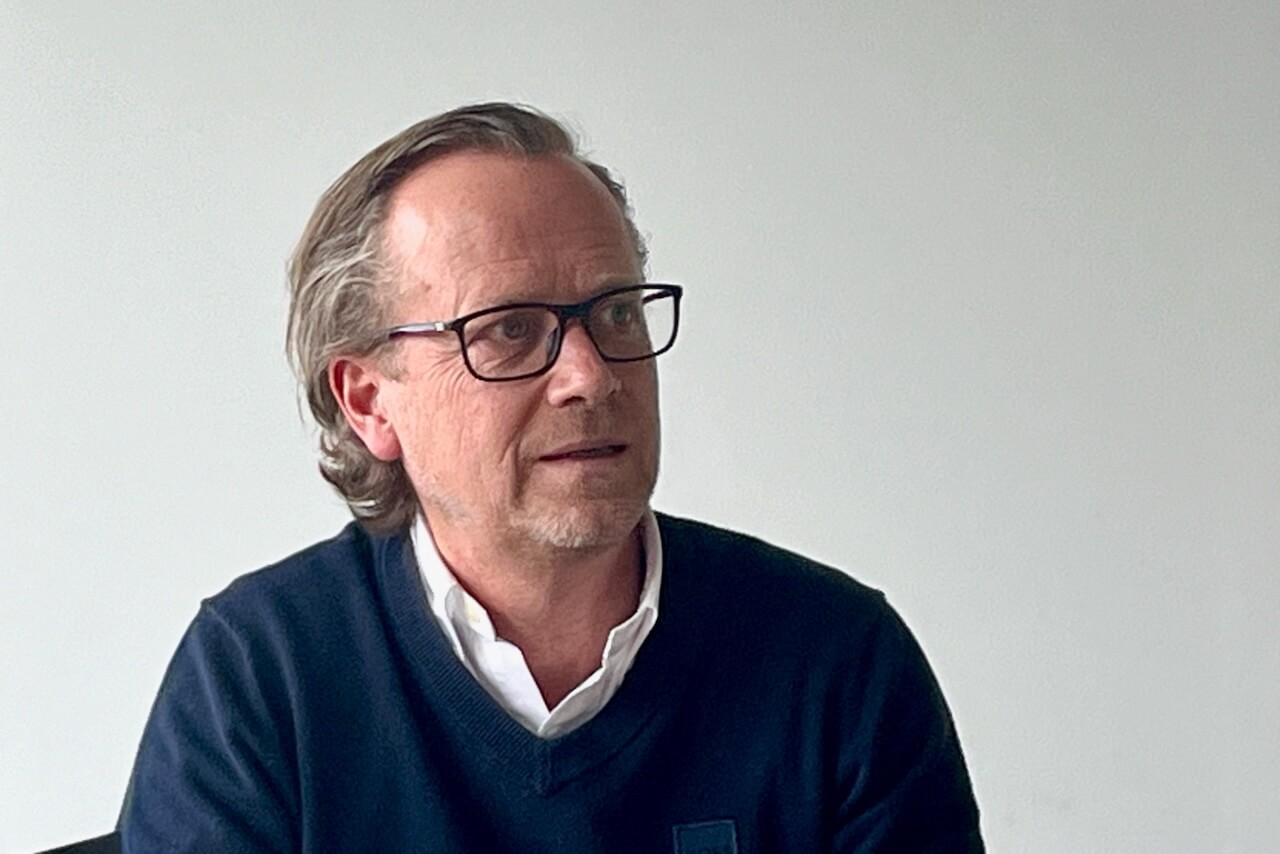The key to Finance Transformation: Simplicity and agility. A roundtable with TriFinance experts
8 April 2025Finance is becoming a true strategic business partner. Financial processes must align with today’s growing complexity. Systems and people must be ready for internal and external change. In short: transforming the Finance function is a multifaceted process. Four TriFinance experts share their insights.
The business environment is changing fast. New goals and expectations are emerging. Finance teams are under pressure to adapt. These changes have a major impact on people, systems, and processes—the three pillars of successful Finance transformation.
Everything is connected. That makes Finance transformation a complex story. All the more reason to sit down with four TriFinance experts and hear their perspectives and advice:
- Olivier De Boeck, Expert Practice Leader, Process, Project & Change Management
- Alexander Declerck, Blue Chip Boutique Leader, Transition & Support
- Johan Reunis, Expert Practice Leader, Business Integration
- Stéphanie Struelens, Blue Chip Boutique Leader, Pragmatic Advisory & Implementation for Financial Institutions

Finance Transformation, really?
A key question for 2025: are we truly at a tipping point when it comes to transforming the Finance function and department?
“Finance transformation has actually been underway for nearly thirty years,” says Alexander Declerck. “Since the rise of ERP systems, we have seen the Finance function fundamentally change — from a financial gatekeeper focused on transactions and compliance, to a strategic business partner that delivers insights to increase performance.”
The transformation is not new, but according to Declerck, we’ve entered a distinct moment in time. “The pace of change is now much faster. New regulations like ESG and e-Invoicing, emerging technologies like AI, new systems and applications, and demographic shifts—all of these are coming at CFOs and their teams with increasing speed. Complexity is rising—think of the VUCA acronym. In this dynamic environment, it’s harder than ever to stay in control and make the right moves.”
In other words: continuous change requires continuous transformation—but that’s easier said than done.
“Intelligent systems are taking over routine tasks like invoice booking and matching. As a result, the focus must shift—faster than ever—to work that delivers real added value.
Johan Reunis, Expert Practice Leader Business Integration
From Operational to Strategic
As change accelerates and complexity rises, the Finance function is evolving. These are two major shifts that organizations must address.
Johan Reunis highlights the changing role of Finance and points to two key drivers: systems—often the trigger for transformation—and people, who must adapt to its impact.
“Operational activities are increasingly automated and now make up a smaller portion of finance professionals’ work,” says Reunis. “Intelligent systems are taking over routine tasks like invoice booking and matching. As a result, the focus must shift—faster than ever—to work that delivers real added value. But that shift isn’t automatic. It has a significant impact on people across the organization.”
Reunis raises several important questions: “Can team members with an operational profile make this shift? How do we adapt our recruitment strategy? What skills will the Finance team of the future need?” These are critical considerations for anyone aiming to evolve Finance into a true business partner.
Olivier De Boeck draws a parallel with HR: “The most successful companies started scaling after shifting from purely operational to strategic HR. An HR leader at the executive table brings real value. The same goes for Finance.”

Future-proofing Finance: Start with strong processes and systems
The gap between theory and practice remains persistent—especially in Finance. “For over twenty years, we’ve been saying that operational and transactional tasks will be automated,” says Alexander Declerck. “But the reality is different. We’re actually getting more requests to fix transactional issues, often after failed automation attempts.”
Johan Reunis agrees. “You need solid foundations. Without the right systems and a strong data structure, everything falls apart. Without that backbone, stepping into a strategic role is simply not possible. That’s where data and insights make all the difference.”
Stéphanie Struelens raises a key question: “Are we really seeing a fundamental transformation? Or are we just making incremental tweaks to keep up with a fast-changing environment?” Her advice: focus on these necessary steps, but don’t lose sight of the need for structural, process-driven change.
“That’s the turning point—or the opportunity,” she adds. “Taking the time to tackle all the key drivers and parameters in a structured, process-oriented way, including those solid process data, systems skills, governance, and organization. That will set you up for real resilience in the face of future triggers and change.”
Taking the time to tackle all the key drivers and parameters in a structured, process-oriented way, including those solid process data, systems skills, governance, and organization, will set you up for real resilience in the face of future triggers and change.
Stéphanie Struelens, Blue Chip Boutique Leader Pragmatic Advisory & Implementation at Financial Institutions

Reducing complexity: Start with a blank slate and clear processes
To align processes, systems, and structures with today’s and tomorrow’s challenges, it’s best to start from scratch. That prevents inefficient finance processes from being carried over into new systems—only to persist, unchanged.
“Many companies still operate like an old airplane, overloaded with dials and switches,” says Alexander Declerck. “A modern Airbus, in contrast, runs on a few large screens with mainly key indicators.”
His colleagues recognize the issue. Compiling hundreds of disconnected reports over and over again wastes valuable time—time that could be spent thinking ahead and working strategically. “Reconstructing the past still dominates too often.”
As the world grows more complex, the need for resilient and clear-cut financial processes becomes more urgent. It sounds logical, but reality tells a different story.
“The key is understanding the difference between complexity and complicatedness,” says Olivier De Boeck. “Complexity is the result of external factors. But complicatedness is often self-inflicted. Increased digitization and new regulations lead to more governance and control mechanisms, which do not benefit efficiency or customer experience.
"One study showed that while the world has become five times more complex over the past decades, the complicatedness of organizations has increased thirtyfold.”
When it comes to governance, two things converge: in companies where Finance plays a strategic role, CFOs often have the mandate to step back and redesign the organization’s foundations—with a “less is more” mindset and a long-term view.
“Finance should be able to challenge the business when needed,” concludes Stéphanie Struelens.
While the world has become five times more complex over the past decades, the complicatedness of organizations has increased thirtyfold
Olivier De Boeck, Expert Practice Leader, Process, Project & Change Management
From legacy to ecosystem: Optimize your systems and processes in Tandem"
A helicopter view and a less-is-more approach are crucial in a technological landscape where innovations are rapidly evolving
“The possibilities with artificial intelligence, predictive analytics, and other technological advancements are enormous, but they come with the risk of systems, functionalities, and separate automation projects piling up,” says Johan Reunis, highlighting the need for a well-thought-out redesign.
However, this is where things often go wrong. Finance professionals are still too rarely included in project teams, let alone given the lead role.
“An ERP implementation is still often seen as an IT project, but this is a dangerous misconception and an underestimation of the broad impact on the organization. When such an implementation fails—usually because the connection between systems and processes is overlooked—it quickly becomes clear that it’s not an IT problem, but an issue with a real business impact. Think of deliveries that don't arrive, production going off track, or customers who can’t be invoiced.”
Regarding systems, Alexander Declerck points out an interesting trend. “Companies are starting to realize that extensive customization is rarely the best option. It's expensive, inflexible, and hard to keep up to date. That’s why many organizations are evolving toward a constellation with a strong standard application and the necessary add-ons.”
“This trend is also driven by the shift to the cloud,” says expert Johan Reunis. “Increasingly, it’s about building an ecosystem, with the ERP system as the foundation and surrounding applications for specific finance or other domains.”
Does this automatically lead to the much-needed simplification? “Partially yes, but it’s still crucial to understand how the data flows relate to one another and to set up an adequate data structure.” Moreover, for many companies, it’s a challenge to part ways with their legacy systems, which are often deeply intertwined with their processes.

External perspectives for a better blueprint
To enable such a fruitful symbiosis, an outside-in view is sometimes necessary, says Stéphanie Struelens. “If you carry out this thinking exercise only with internal people, certain biases inevitably creep into the discussion. You then carry those into the new blueprint of your company. By welcoming external input, you gain valuable insights into how peers approach things, as well as perspectives from outside your own industry.”
Unfortunately, external help is often only brought in when there’s an operational crisis, not to broaden the perspective. “A shame,” says Struelens, “because if we are brought in on time, we get to know the processes, systems, mindset, and culture better. That makes our service all the more relevant.”
This is how the balance between ad-hoc implementations and transformations in finance slowly shifts toward those fundamental changes. “Even seemingly small tasks can reveal major structural problems,” says Alexander Declerck. “We proactively look for those, of course.”
Transformation is not a goal, but a constant
Finance transformation is about proactively and adequately mapping out the to-be processes—the proverbial blank sheet. Then, a feasible path forward is drawn ("cut the elephant into pieces"). This means analyzing and gradually closing the gap between the as-is and to-be, considering how those processes are translated into relevant functionalities in the supporting systems."
But this is not a one-time exercise. It’s not a Big Bang or revolution, but a continuous evolution.
Agility is crucial
“The world never stands still, so transformation is never finished,” emphasizes Alexander Declerck. Johan Reunis agrees and advises companies and their Finance departments to transform in a future-proof manner.
“Make sure your core processes and systems are designed in such a way that new developments can easily and quickly be plugged in. Those who transform significantly yet flexibly today will be able to handle the rapidly increasing complexity of tomorrow. This creates more room to focus on strategy and truly become a business partner.”
Companies are starting to realize that extensive customization is rarely the best option. It's expensive, inflexible, and hard to keep up to date. That’s why many organizations are evolving toward a constellation with a strong standard application and the necessary add-ons.
Alexander Declerck, Blue Chip Boutique Leader, Transition & Support
The holy trinity: Successful Finance Transformation builds on people, processes, and systems
As organizational culture and people play a critical role in finance transformation, Johan Reunis again highlights the importance of strategic recruitment.
“A finance department can facilitate or accelerate the shift to full business partnership by taking action. For example, by thoroughly documenting knowledge of specific transactional flows so that it isn’t lost when employees leave. But also by consciously choosing the right profiles for your team. Do you want accountants who simply process numbers, or do you want people who actively think along with the business?” The panel strongly advocates for the second option.
The key question: Do you first engage the right profiles, or start with that blank slate and processes? In fact, there is no fixed order. They are pillars that stand side by side and reinforce each other, the experts say.
However, according to Olivier De Boeck, the third pillar, systems, should not be overlooked. “Improving processes without digitalization is rare today.” Additionally, the simplification of processes often requires simpler systems. This can even serve as a catalyst for refining certain processes and ideally lead to profound transformation.
“People, processes, and systems form the holy trinity,” says De Boeck. “Together, they can set a positive spiral in motion and create momentum.”
Related content
-
Blog
Important: Fraudulent Whatsapp messages claiming to be from our company
-
Blog
Kristien Schreurs: Building a high-performing sustainability team
-
Blog
Overcoming key hurdles in Finance Transformation: a guide for CFOs and Finance teams
-
Reference case
Contributing to finance transformation at VF Europe with temporary bookkeeping support
-
Reference case
Transforming Finance in EMEA for a specialty chemicals company
-
Blog
Improving efficiency and strategic alignment at an Investment Company
-
Career in Internal Team
Client Partner | Public Sector
-
Career as Consultant
Senior Finance consultant | Public sector
-
Career as Consultant
Junior Finance Consultant | Public Sector
-
Career as Consultant
Medior Finance Consultant | Public Sector
-
Career in Internal Team
Insurance expert manager
-
Career as Consultant
Young Graduate | Trainee Program